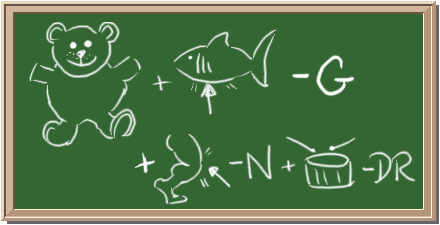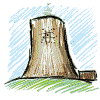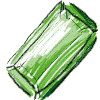
BE-RYL-LI-UM
 Beryllium (Be) is the fourth element of the periodic table and was discovered and named in 1798 by a chemist named Vaquelin. He actually found the element when he was working with emeralds. Now we use beryllium in nuclear reactors, machine parts, and satellites.
Beryllium (Be) is the fourth element of the periodic table and was discovered and named in 1798 by a chemist named Vaquelin. He actually found the element when he was working with emeralds. Now we use beryllium in nuclear reactors, machine parts, and satellites.
Purified beryllium is a grey, hard, steel-like metal that is very poisonous. Another of its characteristics is its non-magnetic quality. Non-magnetic metals are very useful in electronics. Scientists use the letter pair "Be" to represent beryllium in chemical equations and compound descriptions. You can never find beryllium alone. It is always combined with other elements when found on Earth.
Where can you find beryllium?

|
Nuclear Reactors There are big power plants across the world which are called nuclear reactors. These power plants create large amounts of electricity. When they create electricity they use beryllium to help the process. |

|
Emeralds and Gems Beryllium is in emeralds. It is also in another gem called aquamarine. Beryllium is only one of many elements inside an emerald. |

|
Machine Parts and Springs Beryllium is a very light metal. It is also used with other metals to make strong pieces for machines. Beryllium is often used in springs. With beryllium the springs become lighter and stronger. |

|
Satellites Now here's where you have to imagine something. You know there are a lot of satellites orbiting the Earth. Scientists use beryllium in satellites because it is so light. Satellites need to be light in weight because it is easier to get them into space. |

|
Spacecraft You've already learned that beryllium is a very light metal. That's why NASA uses it in the Space Shuttle. Every time you see that Shuttle take off you will know that it's lighter because of beryllium. |




